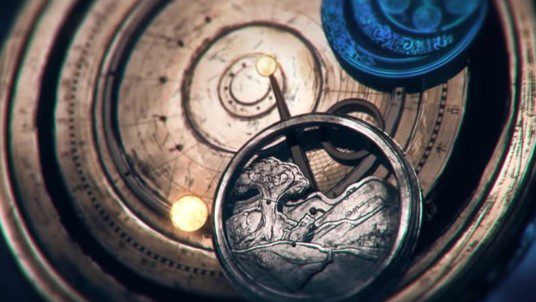The Lore and History of The Witcher Novels Part 1: The Conjunction of the Spheres
“Verily I say unto you, the era of the sword and axe is nigh, the era of the wolf’s blizzard. The Time of the White Chill and the White Light is nigh, the Time of Madness and the Time of Contempt . . . the Time of End. The world will die amidst frost and be reborn with the new sun. It will be reborn of Elder Blood, of Hen Ichaer, of the seed that has been sown. A seed which will not sprout but burst into flame. Ess’tuath esse! Thus it shall be! Watch for the signs! What signs these shall be, I say unto you: first the earth will flow with the blood of Aen Seidhe, the Blood of Elves…”
–Ithlinne’s Prophecy.
INTRODUCTION
With the upcoming release of Netflix’s prequel series, The Witcher: Blood Origin, a revisiting of the canonical history of the Continent depicted in the Witcher novels, seemed appropriate in preparation for a compare-and-contrast betwixt the true canon and whatever fan fiction that Netflix conjures. The lore and history of The Witcher are far more in-depth than many suppose. Even so, there are large swaths of gray areas for Netflix to play with in peace. However, there are three major points that must occur in a certain fashion; otherwise, the books — and, by extension, the shows — will cease to make any sense.
From press announcements and basic speculation, it’s clear that Netflix has chosen to take all three of these significant events, which take place over 1500 years, and condense them into a single time, eradicating any consistency. They had more room to play in this history than nearly any other prominent fantasy franchise. Yet, they specifically chose to adapt — and likely destroy — the only three events which they had to get right: The Conjunction of the Spheres, the creation of the first Witcher, and Lara Dorren’s death. Without a lore-accurate Conjunction of the Spheres or Lara Dorren, the decisions of the Wild Hunt and the purpose and origin of Ciri’s abilities will cease to make any sense, destroying audience immersion in a broken narrative.
For reference throughout this breakdown, the timeline of The Witcher is divided into Before Resurrection (BR) and After Resurrection (AR). The referenced Resurrection occurred roughly 230 years after The Conjunction of the Spheres and 1248 years before the events of the Witcher books. As a side note, the Resurrection takes place roughly simultaneously with Blood Origin’s made-up events. Perhaps there will be a fourth major event depicted in the series that condenses every critical moment of lore into a single time.
Except for this introduction, this breakdown will not go out of its way to compare and contrast the events of either of the Netflix shows with the books or their history; it will merely focus on depicting the events that the books referenced. Once Blood Origin releases, a more accurate comparison will be possible and likely forthcoming.
THE ELDER RACES | Pre-history – 2230s BR
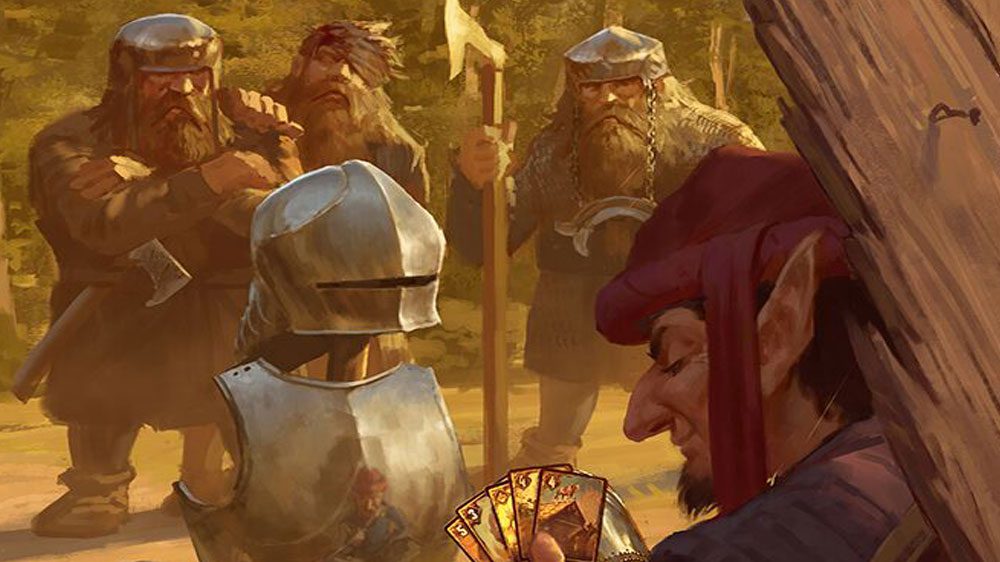
Millennia ago, before the immigration and colonization of the elves and the other races, the only sentient race known in the Continent was the gnomes. Hailing from unknown evolutions, the gnomes are the only sentient species that evolved specifically upon this world. All others arrived from distant worlds or unknown origins. Only the gnomes can truly call the Continent home; no others have a claim for this land as strong as theirs. For a time, they alone lived upon the Continent, cultivating their herbs. That all ended when their evolutionary cousins, the dwarves, arrived from unknown realms, roughly 2000 to 3000 years before The Conjunction of the Spheres.
As the dwarves had no violent nor aggressive intentions of invasion or expansion toward the Gnomes, these two elder races lived in peace for many years. Together, they flourished, primarily developing the cities of Tir Tochnair and Mahakam, both of which survived the millennia, partially in secret, standing out as two of the few bastions and legacies left of the ancient world.
While the gnomes lived their simple lives, the elves evolved on a distant world in a strange universe. These Aen Undod elves did not resemble the Aen Seidhe elves that the famed Geralt of Rivia would later encounter upon his journeys, for the Aen Seidhe were but poor copies and devolved descendants of these once great Aen Undod elves. Until the time of The Conjunctions of the Spheres, elves were ethereal and magical, almost Tolkienian, beyond human understanding or comparison. In those days, elves more closely resembled gods or angels than humanity. Modern Aen Seidhe lost all their otherworldliness after the Conjunction until they were nothing more than pointy-eared humans.
The Aen Undod did not restrict their early lives to merely one little rock. The Aen Undod possessed a near unique and incredible ability to traverse the boundless multiverse at will. No world or unknown plane was too far or dangerous for the Aen Undod to explore. Even amongst these Aen Undod, some were special above the rest. Born by some unknown cosmic need, divine influence, genetic experimentation, or simple evolutionary necessity came the Elder Blood gene. A bloodline that wielded these multiversal abilities above the rest, the power coming from their very blood and soul rather than the manipulation of magical training. Some with this gene even had the ability to traverse time as well as space. These bloodlines were revered and set above the rest, many becoming royalty.
THE AGE OF MIGRATION | 2230s BR
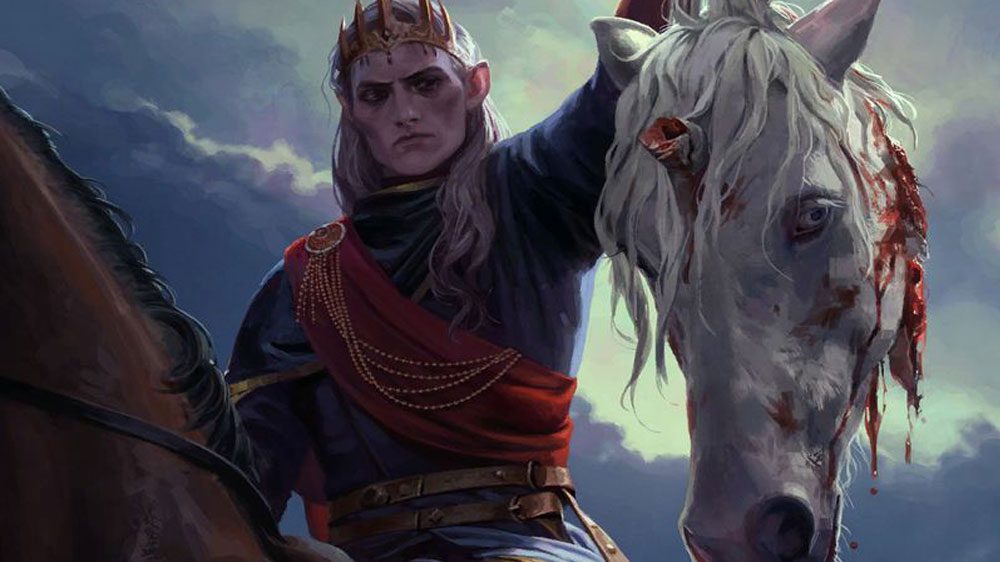
The days of prosperity and endless exploration of the Aen Undod came to a bitter end with the cataclysmic annihilation of their homeworld. While the cause of this destruction is unknown, the video games suggest that this doomsday came by way of the multiversal destructive force known as The White Frost. Regardless of the cause, the Aen Undod were forced to leave their home and venture into the multiverse in search of a new world.
During this time, cultural differences began to appear, and two distinct groups formed from the remnants of the Aen Undod. One of these off-branches, The Aen Seidhe, settled upon the Continent, finding refuge in the world of gnomes and dwarves. The Aen Seidhe reached the shores of the Continent aboard pure white vessels, arriving by the rivers which would come to be known as the Pontar and the Yaruga. The Aen Seidhe’s arrival was far less peaceful than that of the dwarfs, resulting in many wars amongst the races. Still possessing the powers and might of their ancestors, the Aen Seidhe soundly defeated all competitors for dominion over the Continent. The Aen Seidhe were still mighty and almost godlike, mortals so far beneath them that the concerns of their little lives never once crossed their minds. These bloody wars ended with the elves as the dominant species of the Continent.
One of the first feats attempted by the Aen Seidhe was the construction of twin towers to provide swift travel around the Continent and even to other worlds. The first of these towers, Tor Lara or The Tower of the Gulls, soared high above the Isle of Thanedd and would later provide The Lady of Space and Time, Ciri, a quick escape from the villainous Vilgefortz. Tor Lara’s twin was Tor Zireael, or The Tower of the Swallow. The Lion Cub of Cintra, Ciri, also passed through the portal in this tower. However, instead of returning to Tor Lara as intended, she found herself in the land of the Aen Elle. The Witcher III added a third tower to this set, Tor Gvalch’ca, or The Tower of the She-Falcon, on the frozen heights of Undvik in Skellige. This third tower was the site of the final victory over The Wild Hunt and the pushing back of The White Frost by Ciri.
There is some scholarly debate on whether or not the Aen Elle elves broke off from the Aen Seidhe before this arrival on the Continent or later, closer to The Conjunction of the Spheres. Regardless, while the Aen Seidhe asserted their dominance over the Continent, the Aen Elle immigrated to a new world inhabited by an intelligent race of unicorns. These unicorns were the first race the elves had ever encountered that shared their innate multiversal abilities. Upon the arrival of the Aen Elle, a bitter and near-endless and perpetual war betwixt the unicorns and the elves began. This bloody rampage lasted millennia, eventually ending with an elven victory. The unicorns near culled, the few survivors went into hiding, steering clear of the Aen Elle until the arrival of Ciri many millennia later. The Aen Elle founded the elven city of Tir ná Lia, with Auberon Muircetach as their king.
THE CONJUNCTION OF THE SPHERES | 230s BR
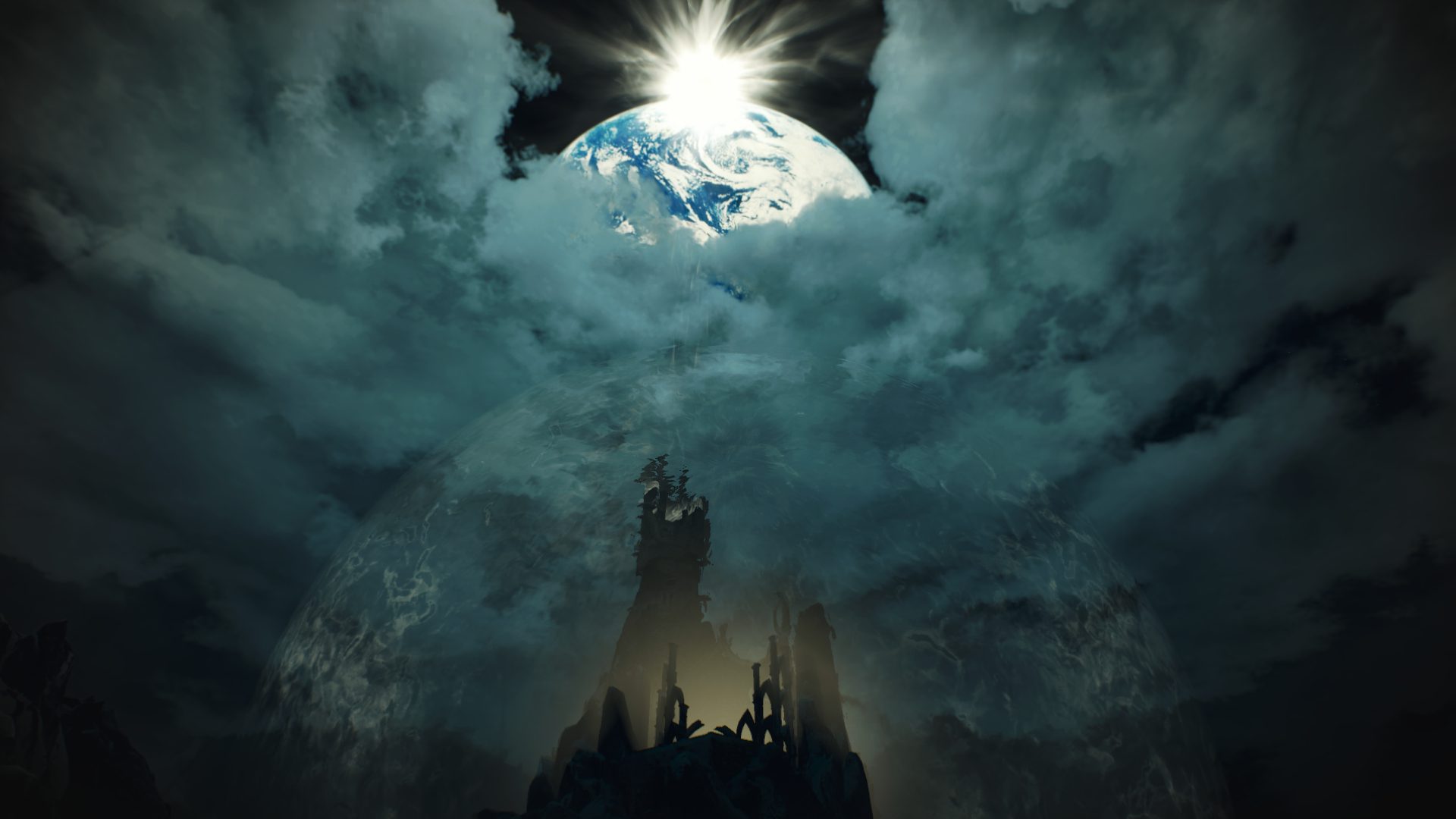
The most defining time in the Continent’s lengthy and sometimes clouded history was the fabled Conjunction of the Spheres. Mages, sorcerers, and scholars agree on this term and this event, though they agree on very little else. These scholars and magical historians adhere to the scientific theory that the universe exists with an infinite number parallel to it. In each of these universes are worlds beyond count. Many of these worlds, or spheres, share the same basic makeup and exist in the same space, yet their relationship with each other is constantly shifting. Natural portals between these spheres have always occurred in the wild, and the elves could pass from one sphere to another with ease. However, that all changed with the Conjunction.
These spheres go through cycles of distance and closeness, like the moon waxing and waning in the sky. During these cycles, there are moments in which the walls between the spheres are thin. At one such moment, when the barriers were thinner than ever before, the Conjunction of the Spheres began, with countless gateways opening simultaneously across the land, both robbing loved ones and delivering strange and fearsome new inhabitants to the Continent.
At that fateful time, nothing was certain, and all spheres and sentient life were plunged into a veritable dark age. The Conjunction saw the cycle of spheres come closer together than they had ever been before, yet will likely be once again someday. With the walls between spheres and universes blurred, countless horrors poured through the cracks from other spheres. Many elves, gnomes, and dwarves vanished from off the face of the Continent, falling into unknown worlds. Monsters of every make and kind poured through the gaps, filling the world with blood and chaos. Even humanity found their way to this new world through the Conjunction, their home worlds lost to darkness. The Continent would never be the same again.
Chaos defined this land for centuries, the elves struggling to maintain their dominion after the influx of contenders for dominance. According to various accounts, it was at the time of the Conjunction that the Aen Elle broke off from the Aen Seidhe to make their final home in Tir ná Lia.
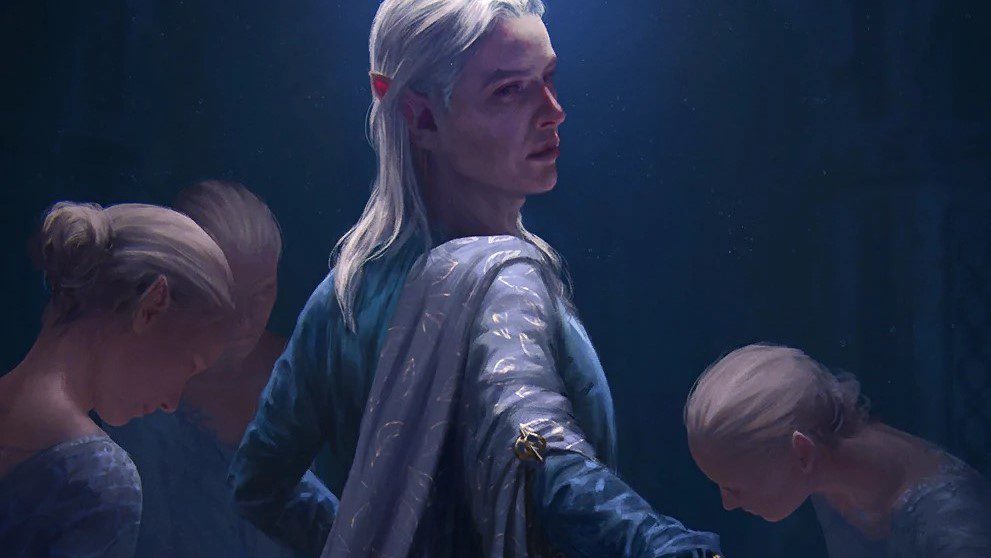
Far more changed at the Conjunction than merely new inhabitants of the world. Something changed within the elves themselves, something deep and fundamental. Their very souls were corrupted, beginning a devolution that would take millennia. However, the effects of this would not be seen for many centuries to come.
In the years after the Conjunction, early humanity managed to eke out a stable existence on the Continent. These ancient humans were far from evolved and had virtually no quality of life, choosing to live as nomads. However, they made a life for themselves in this new and dangerous world. These first humans were divided into two distinct cultural groups; the Dauk and the Wozgor. Both groups are said to have been extinct by the founding of the Northern Kingdoms over a millennia later. While their culture and history are nearly extinct, much of their beliefs and mythological figures remained, later to be incorporated into Nordling religions.
One such mythological figure that survived since the time of the first humans at The Conjunction of the Spheres was the goddess Melitele, whose worship continued through the life of Geralt of Rivia. The worship of this goddess, and those who follow her, saved Geralt’s life on more than one occasion. Her worshippers were heralded for their humanitarian and peaceful efforts. They are largely believed to be one of the only pure and unadulterated religious practices in the Continent’s long and bloody history.
THE RESURRECTION | 0

Despite its cultural significance as the turning point in human timekeeping upon the Continent, virtually nothing is known about the referenced Resurrection. It is clearly a reference to the Resurrection of Jesus Christ and is used as a throughline to make timekeeping between the Continent and Earth consistent. As The Witcher was heavily influenced by Polish mythology and beliefs, it’s unsurprising to have such an influence on the Continent’s timekeeping. It’s implied in The Witcher that there was an actual Resurrection that took place at that time, but it’s likely intentionally ambiguous by the author and more meant for consistency across worlds.
For part 2 of this breakdown, check back next week. Va fáill.

